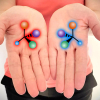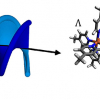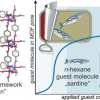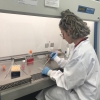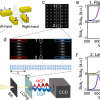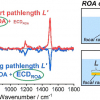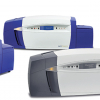
It’s not easy to be sure that drugs and supplements with twisted—or chiral—structures are turning in the correct direction. Now, terahertz radiation can probe both the structures of molecular crystals and their twists, research led by the University of Michigan has shown. The researchers hope that the technique could also help diagnose harmful accumulations of twisted molecules in the body, including bladder stones, insulin fibrils and amyloid aggregations such as the plaques that appear in Alzheimer’s disease.
In a world of curled molecules, biology often favours right- or left-handed versions. But quality control for twisted molecules is tough, and monitoring the chiral structures of drugs and supplements kept in storage isn’t usually done.
“The methods most commonly used at pharmaceutical companies are very sensitive to impurities, but measuring chirality is expensive”, said Wonjin Choi, a research fellow in chemical engineering at the University of Michigan.
The new method can quickly recognise wrong twists and wrong chemical structures in packaged drugs using terahertz radiation. It was developed by an international team, including researchers at the Federal University of São Carlos, Brazil; Brazilian Biorenewables National Laboratory; University of Notre Dame; and Michigan State University.
“Biomolecules support twisting, long-range vibrations also known as chiral phonons. These vibrations are very sensitive to the structure of molecules and their nanoscale assemblies, creating the fingerprint of a particular chiral structure”, said Nicholas Kotov from Michigan.
The team was able to measure these phonons in the spectra of twisted terahertz light that passed through tested materials. One of these, L-carnosine, is currently used as a nutritional supplement. “If the twist of the molecule is wrong, if the twist in the way the molecules pack together is not right, or if different materials were mixed in, all of that could be inferred from the spectra”, Kotov said.
John Kruger, professor of veterinary medicine at Michigan State University, provided bladder stones from dogs, and the team discovered their chiral signature. The team hopes that the findings could help enable rapid diagnostics for pets and perhaps later humans. In addition, they studied insulin as it grew into nanofibres that make it inactive. If the terahertz light technology can be adapted for home healthcare, it could verify the quality of insulin.
The team also explored how light can influence structures, rather than just measure them. Calculations carried out by André Farias de Moura, professor of chemistry at the Federal University of São Carlos and co-corresponding author, show that multiple biomolecules vigorously twist and vibrate when terahertz light generates chiral phonons.
“We foresee new roads ahead—for instance using terahertz waves with tailored polarisation to manipulate large molecular assemblies. It might replace microwaves in many synthesis applications in which the handedness of the molecules matters”, said de Moura.
Based on de Moura’s calculations, Kotov and Choi believe that the twisting vibrations of chiral phonons caused by terahertz light may make disease-causing nanofibres more vulnerable to medical interventions. Future work will explore whether that interaction can be used to break them up.




